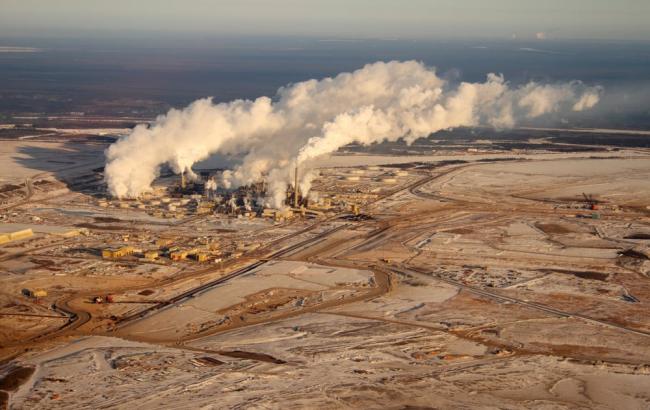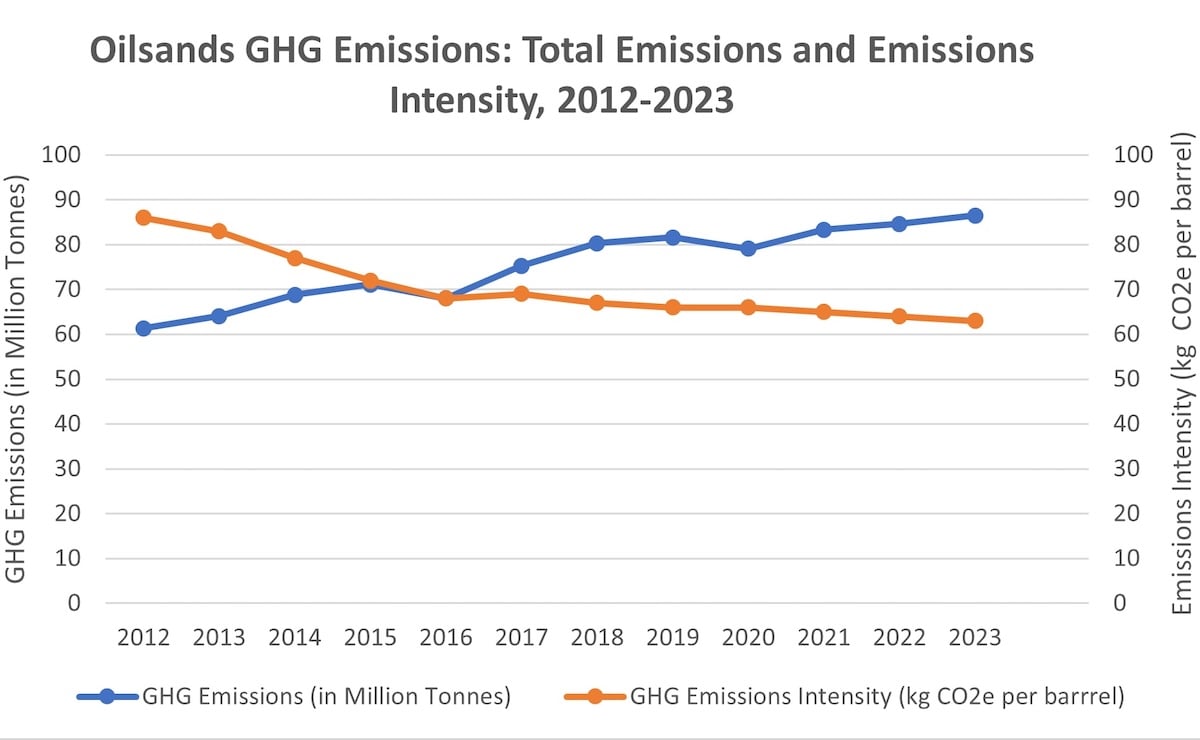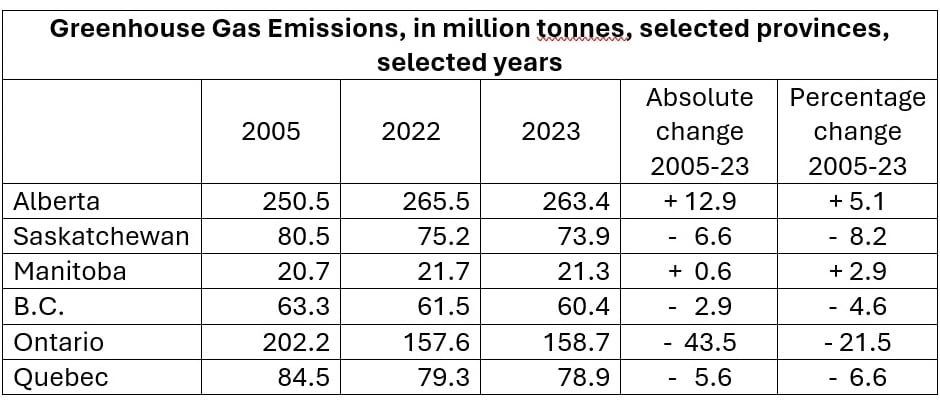Articles Menu

June 26, 2025
As Mark Twain said, “There are three kinds of lies: lies, damned lies, and statistics.” When it comes to greenhouse gas or GHG emissions, Alberta’s United Conservative Party government selectively uses statistics to try to persuade the world of the ludicrous claim that Alberta is a climate change leader.
A prime example is an early-June news release from Environment Minister Rebecca Schulz and Energy Minister Brian Jean headlined: “Report shows Alberta producing more oil and less emissions.”
The claim makes sense only if you use “emissions intensity” as the yardstick for evaluating performance when it comes to reducing GHG emissions. But as I’ve noted before, the emissions intensity concept is a red herring. Reducing carbon dioxide emissions per barrel of oil (emissions intensity) doesn’t necessarily reduce total emissions.
The oilsands make this point only too well. The oilsands’ performance, as shown below, is one where emissions intensity today is lower than at any point in the industry’s history. Ministers Jean and Schulz want you to focus on that intensity, the orange series in the chart. This trend allows them to crow that “oilsands emissions continue to decline.”

But what matters most to the pace of climate change is a different statistic: the actual number of tonnes of GHGs sent into the atmosphere.
So while emissions intensity may be at a record low, look at where total oilsands emissions (the blue series) have gone. Up, up, up.
In fact, oilsands emissions set a record high in 2023. The oilsands had never generated more greenhouse gases than the 86.5 million tonnes of carbon pollution sent skyward in 2023.
Don’t expect to see this troubling statistic reported in an Alberta news release or the corporate business press. Nor should you assume Premier Danielle Smith’s government will publicize another uncomfortable fact — increased oilsands production has increased provincial GHG emissions. The exact opposite to what the ministers’ news release claims.
From 2015 to 2023 oilsands production grew by 35 per cent; oilsands emissions increased as well — by 21.7 per cent.
These statistics confound the government’s narrative. Government communicators want the public to focus on the record low in emissions intensity. They want the public to totally ignore the record high in oilsands emissions.
Jean and Schulz attempt to portray Alberta as a climate change leader in their news release. Here they latch on to Canada’s latest report to the United Nations on the country’s emissions performance. The data there shows Alberta reduced its emissions by more than any other province between 2022 and 2023. Alberta led the country with a 2.1-million-tonne reduction.
This prompts Schulz to boast: “We’re proud to lead Canada in absolute emissions reductions.”
But the minister asks readers to applaud a one-year, 0.8 per cent reduction in emissions and ignore the longer-term Canadian statistical story. That story undermines any claim to climate leadership.
In the longer-term picture Alberta and Manitoba are the only Canadian provinces emitting more greenhouse gases in 2023 than they did in 2005. Perhaps, at this political moment, it’s un-Albertan of me to point out that Ontario is the real provincial leader in reducing GHG emissions. Alberta isn’t even a close second.

Twain was right. Statistics have the potential to be cherry-picked to prop up deceptive narratives. The apparent ease with which Alberta politicians will use statistics selectively to mislead the world about the province’s environmental performance is stunning and troubling.
Ian Urquhart is a professor emeritus in political science at the University of Alberta.
[Top photo: The actual number of tonnes of GHGs sent into the atmosphere by the oilsands keeps going up. Photo of Alberta’s oilsands by Kris Krug, Creative Commons licensed.]